17 September 2018
If a fear of the unknown is putting you off buying a boat, you’re not alone.
The single biggest reason that many would-be boat owners shy away from acting on an often long-held dream is fear of making a mistake or having an accident, or simply not believing they have what it takes to safely control a vessel.
Specifically, it’s often a fear of mooring, of controlling a boat in confined spaces, that sets the nerves jangling, and that’s before you even factor in the navigational challenges of setting out to sea.
That’s why confirmed landlubber Matt Ware decided to see if Franklin D. Roosevelt was right when he said “the only thing we have to fear is fear itself”, and took to the water with NYA instructor Chris Billson.
I have helmed a boat on three occasions over nearly 30 years, day boats both on the Broads in my youth and, more recently, twice on holiday in Corfu.
Each time, there’s been a minor disaster, from woeful efforts at mooring in Norfolk to making a complete hash of dropping anchor in a bay off the Greek island’s coast and nearly grounding the boat.
So I could be forgiven for thinking that boating is not for me, that I’d be a liability if ever let loose on something larger, especially on the busy waterways of the Broads and its often tight mooring spaces.
But is this really the right way to think? Would I have given up on driving a car if, after three attempts without instruction, I couldn’t immediately parallel park to perfection? Of course not.
And so I found myself in Oulton Broad, near Lowestoft, sitting in a small classroom on a bright, sunny day with Chris, who has been on the water since he was about two years old.
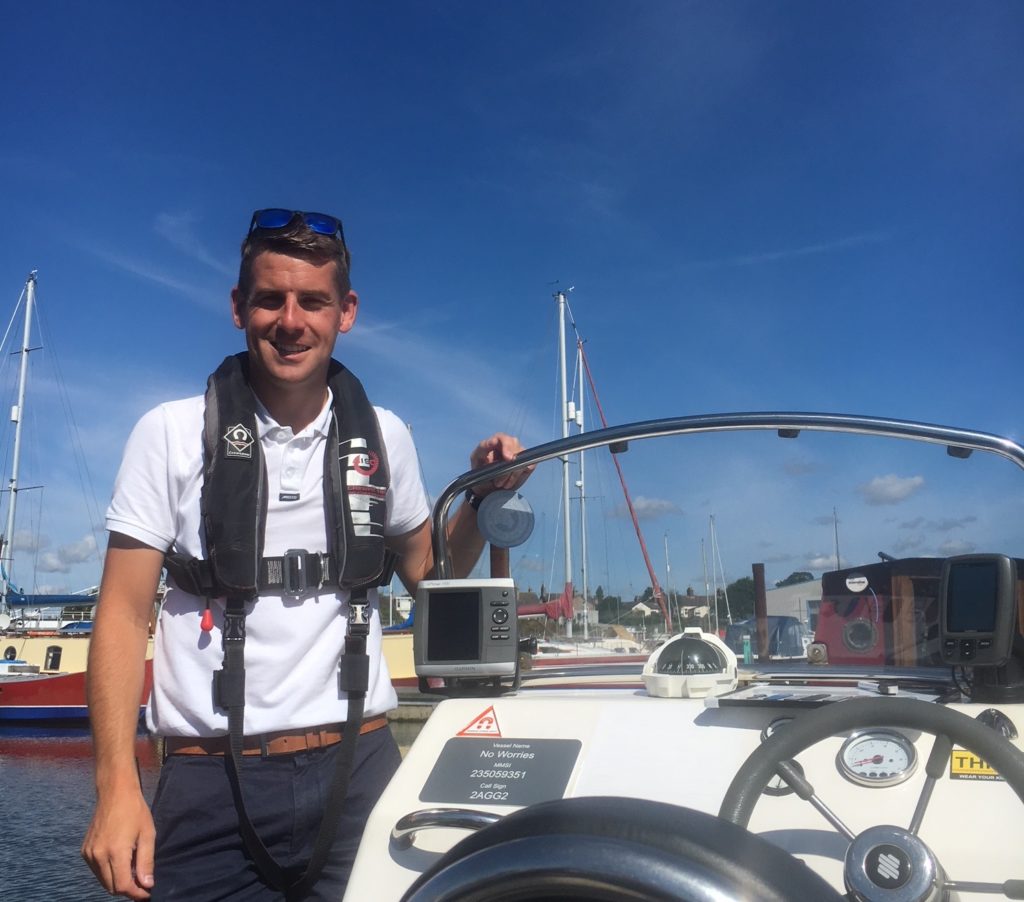
“Dad was in the Royal Navy,” he tells me, “so we moved around a bit and settled in Norfolk, and he bought a little Shetland day boat as a first boat.
“From the age of about 12 I was helping people moor boats, and moving boats around on the Broads.”
Chris, who became an accredited Royal Yachting Association (RYA) instructor in 2015, founding East Coast Motorboat Training, says it’s hardly surprising that newcomers to boating get the jitters when it comes to taking the helm for the first time.
After all, there are no brakes, no handy road markings, and no traffic lights or roundabouts to control the flow of cars – on the water, to the uninitiated at least, it looks like a free-for-all.
“I liken it the first time you ever go on the road in a car,” he says, delving into a bag full of life jackets as part of the personal safety preparation.
“I remember my first day on the road – I was petrified. Now I get in a car and don’t even think about what I’m doing, and it’s very much the same when you first start on a boat.
“You’re a little bit nervous and things don’t always go right for you but, providing you follow what the instructor says, more or less it will happen for you.
“On the courses, the nerves tend to give way to the excitement of going on a boat for the day, and by the time you get them on the water – which is within half an hour – you see the smiles.
“We try to make things as relaxed as possible and treat it like a day out and have a bit of fun.”
Having had problems mooring in the past, and also seen a few chaotic moments at pub-side moorings on the Broads, I ask Chris if it’s really as hard as it looks.
He smiles. “It’s probably the hardest bit, but it doesn’t have to be. Providing you understand some of the very basics, it happens for you. It’s when you ignore those basics, when you don’t understand what the tide or wind is doing, it can all go wrong. Most importantly, know when you’ve gone wrong, come out and try again.
“Turning in a confined space also always worries people – they tend not to want to damage other people’s boats more than worrying about their own!”
As someone who is about to control someone else’s boat, never mind all the other boats on the water that don’t belong to me, all of it is worrying me as we walk down to the where Chris’s 6-metre RIB (rigid inflatable boat) is moored in Lake Lothing.
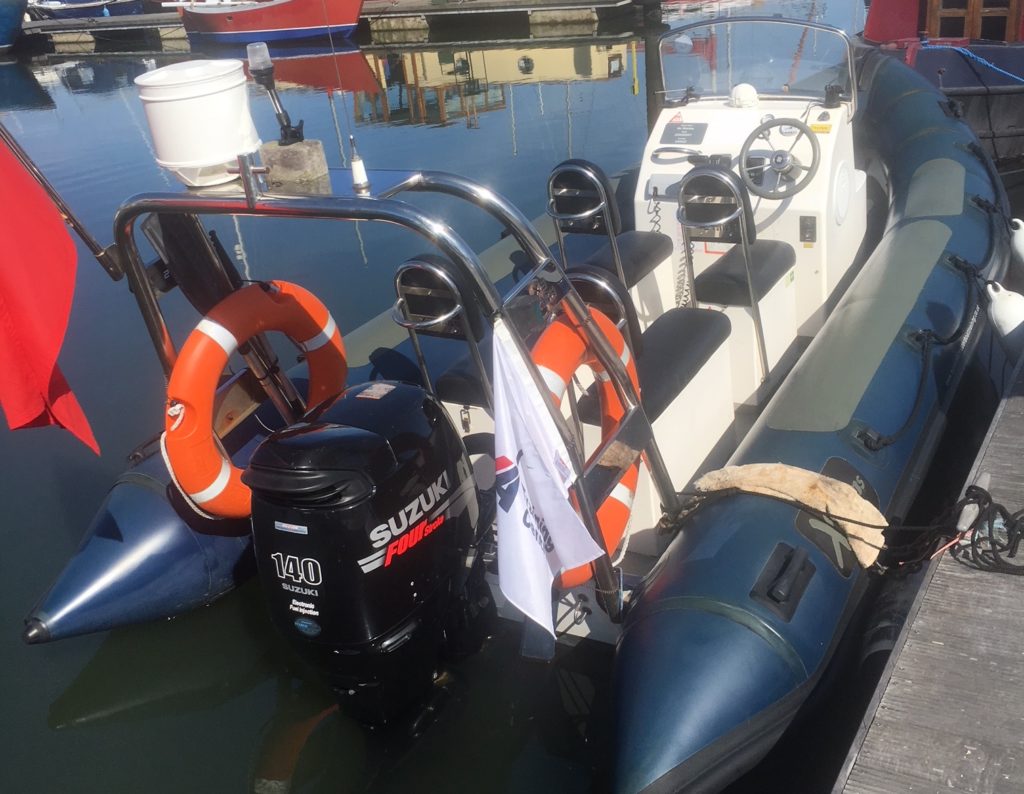
Reassuringly, the boat is called No Worries, though I can’t say it has any immediate impact on my fluttering nerves.
With self-inflating, automatic lifejackets on, and Chris at the helm, we head off towards Mutford Lock, which separates the salt water of Lake Lothing – heading out to the North Sea – from the freshwater of Oulton Broad.
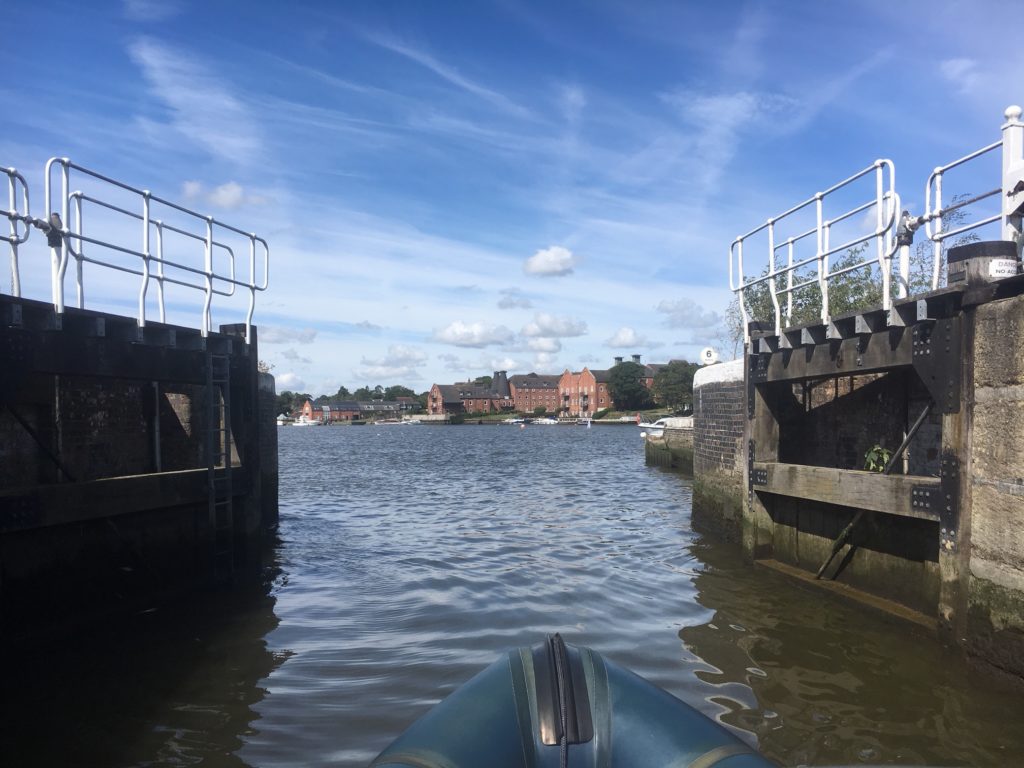
The plan is to undertake some of the elements of the two-day RYA Inland Waterways Helmsman and Powerboat Level 2 courses.
Once through the lock and on to open water, it’s time for me to take over.
Compared to a car, at least a manual car, the controls are simple – steering wheel, forward, neutral and reverse.
This is the easy bit, cruising along an open Broad with only a smattering of other boats about, and keeping an eye on the speed on the GPS monitor to keep within the fairly sedate 6mph limit.
Next is a figure of eight, weaving in and out of buoys a few times, presumably to ensure I have basic control of the steering, first at very low speed and then a little faster.
Doing the same in reverse gives a tighter turning circle because the pivot point of the boat, which was towards the centre going forward, is now at the rear.
As long as you face in the direction of travel, backwards, no-one should have any problems with this manoeuvre.
Mooring alongside a buoy in open water is the first time I need to consider the direction of the wind and tide, although at least there’s nothing to hit…
Chris explains that approaching with the tide will lead to a loss of control of the boat’s forward momentum – it’s much easier to approach against the tide, slip into neutral a few metres away and the last of the forward momentum combined with the tide will hopefully bring you to a stop next to the buoy.
Which it did. If the wind and and tide are in opposite directions, use whichever is stronger – usually, it will be the tide.
The man, or woman or child, overboard drill is something you hope you won’t have to put into practice, but accidents happen and it’s important you know how to deal with it.
Chris brings out Brenda the fender, and hurls her (it) into the Broad.
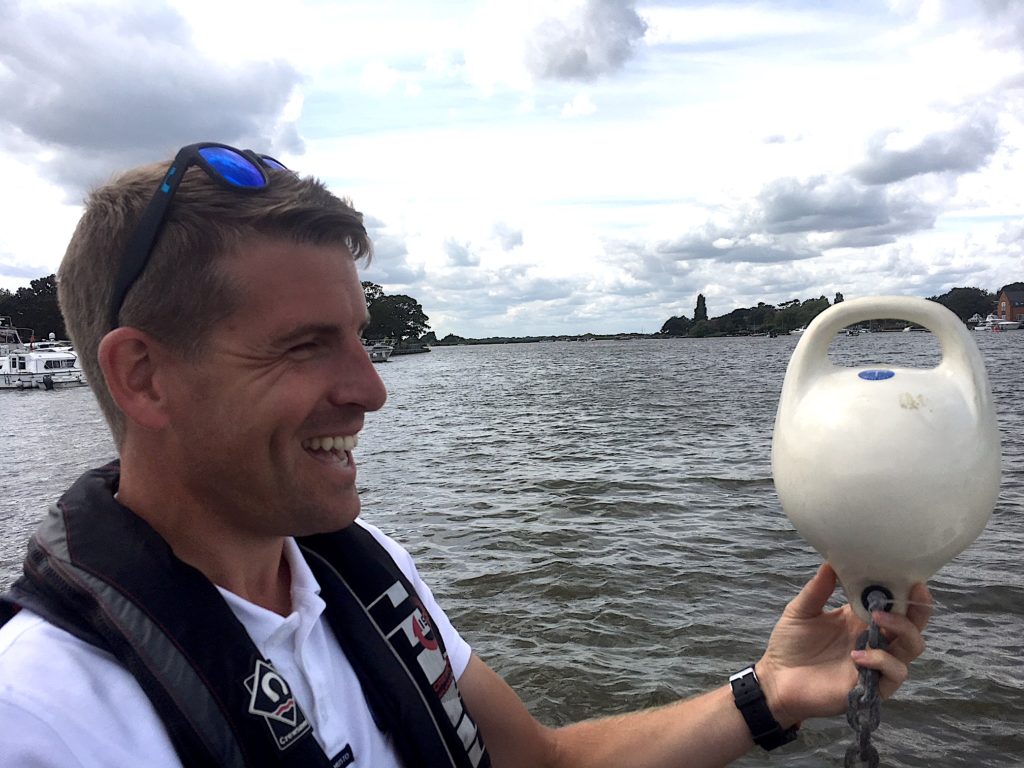
I’m instructed to shout “man overboard”, and ask Chris to point to Brenda’s location, and keep pointing, as it’s easy to lose sight of someone, especially if you’re at sea in even a moderate swell.
Turning round and, again, approaching into the wind, I follow the same process as mooring to a buoy, but cut the engine as soon as Chris tells me Brenda has been safely grabbed.
So far so good, but now we head over to a mooring area stacked with boats much bigger than ours for some “pontoon bashing”, as Chris calls it, with a smile.
It’s been plain sailing so far, but this is the acid test.
With some trepidation, but confident that Chris will put me right in the event of calamity, I creep towards the quay heading at an angle, into the tide, and slip into neutral a couple of boat lengths away.
For a few seconds, I still have a bit of control of the steering, and turn the front of the boat away from the quay, as you would when parking a car.
Then it becomes a little counter-intuitive. It’s tempting to keep turning the wheel away from the quay and put the power back on to try to bring the stern of the boat in line.
But Chris tells me to steer into the quay and give a brief squirt of reverse. With that, the stern comes into the quay and I’m in! Kind of.
A few more practice runs when left to my own devices and, while far from perfect, I’m confident that as long as I remember the basics, mooring a boat of this size shouldn’t pose too many problems.
Over lunch, Chris tells me that 30 to 40 per cent of his work is with people who are complete newcomers to boating.
“There are some that are thinking of buying a boat, but the bulk of the work tends to be those that have bought a boat as a newcomer, taken it out and gone ‘crikey, this is not as easy as I thought’,” he says.
“Then there are those that have had a small boat and then got something much bigger, or gone from single engine to twin engine and, all of a sudden, it’s a little bit different and they need a bit of help.
“I had a customer who came along and did a course, then bought a boat from NYA and called me to say he was out at sea. That’s what it’s all about for me – it’s great to see.”
We head back out on to the more industrialised Lake Lothing, home of the historic MTB102, which crossed the Channel eight times during the evacuation from Dunkirk in World War II.
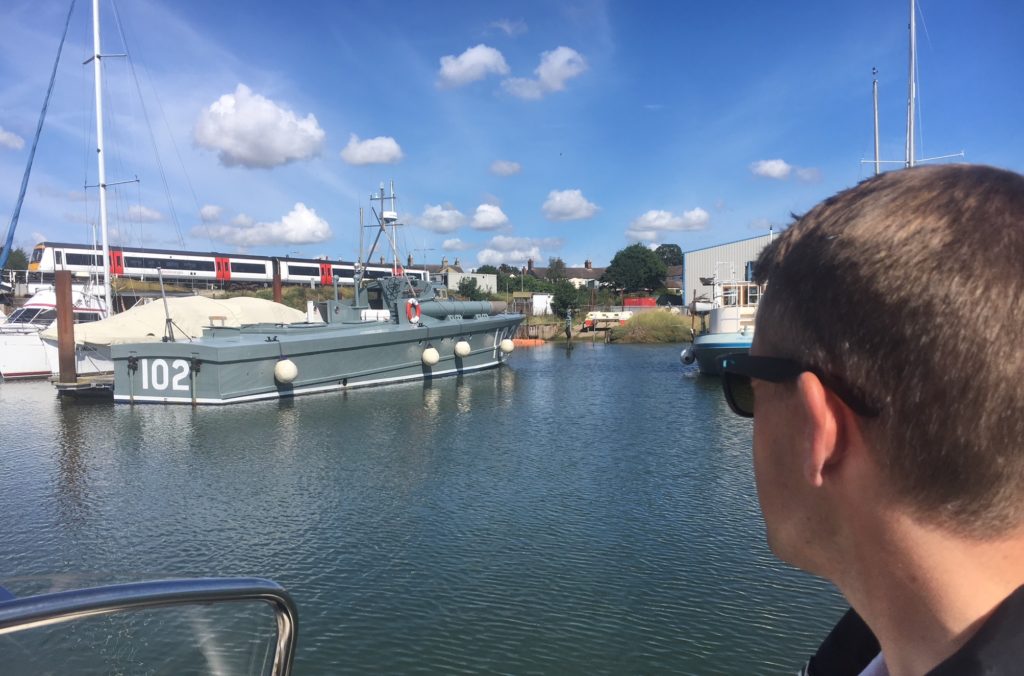
“The Broads, plus Lowestoft and Yarmouth, are unique,” says Chris. “You have 120 navigable miles of inland waterways, plus you’ve got the sea, and Holland’s only 80 or 90 miles away.”
We don’t have time to go to sea, but there’s time for a bit more mooring practice before I take on three-point turns, surrounded by boats.
As long as I take into account the bow swinging out on reversing, and remember to steer before engaging the gear, it’s not dissimilar to the same manoeuvre in a car.
I don’t hit anything, and I’m feeling more at home in controlling the boat in confined spaces by the time we head back to our mooring.
My one-day taster session hasn’t earned me a certificate, but it has taught me that, as with most things in life, proper training, and plenty of practice makes the water a far less scary place to be.
I wouldn’t even contemplate buying a boat, or even moving from small to larger, without the appropriate training, even though the UK is the only European country that doesn’t require it by law.
“There are lots of different courses you can do,” says Chris, who crews the support boat on the NYA Cruising Club. “We can cater for people that just want to go boating inland on a Broads cruiser, or on day boats, up to people who want to go to sea, and those who don’t really know.
“They may have a boat that’s capable of going to sea, but want to know if they like it.
“If they don’t want to do a full course they could come down for a taster session, bring the family, the kids and see if boating is for them.
“We will just go out for the day, go out on Oulton Broad, let the kids have a go, and do some basic manoeuvres.”
So if the only thing stopping you from buying a boat of your own is that perfectly natural fear of the unknown, don’t be put off.
Spend a day or two on the water with someone like Chris, and you might just change your mind.
If I can do it, you probably can too.